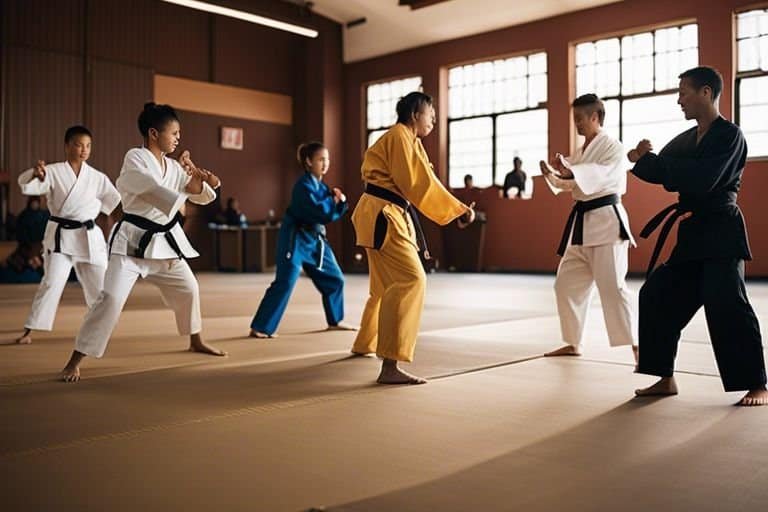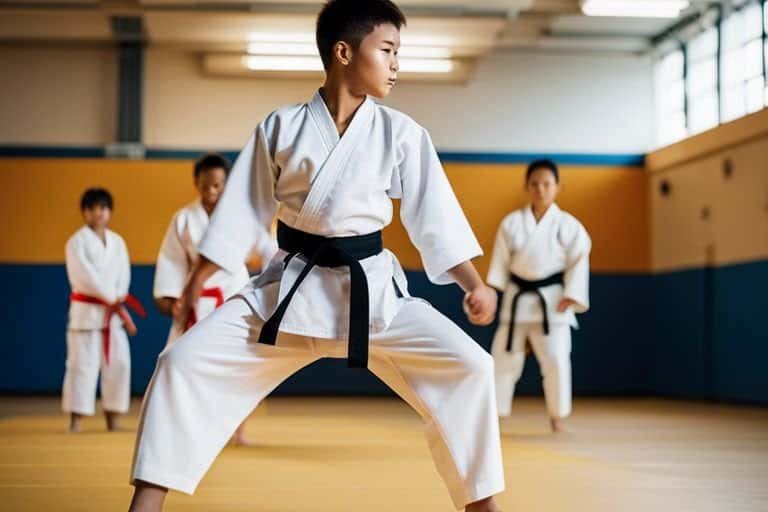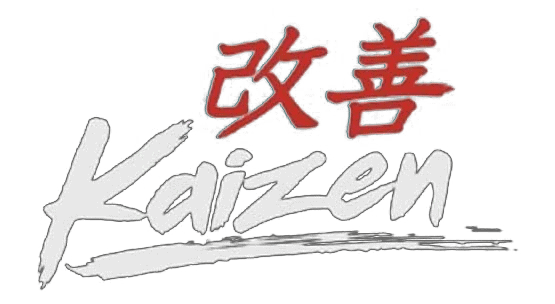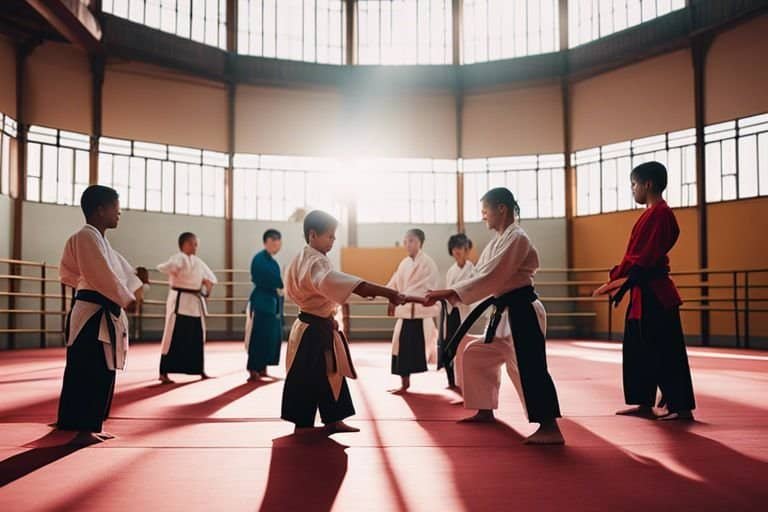Martial arts has long been recognised as a powerful form of physical education for individuals of all ages. The discipline not only enhances physical fitness and self-defence skills, but also nurtures mental strength and self-discipline. From improving coordination and flexibility to promoting cardiovascular health and muscle strength, martial arts offers a holistic approach to physical fitness. For children, the practice instils qualities of respect, focus, and resilience from an early age. Moreover, the Why Martial Arts is the Perfect Activity for 6 to 8 Year Olds article delves deeper into the specific benefits for this age group. For adults and seniors, the discipline provides an effective outlet for stress relief and mental wellbeing. Ultimately, martial arts stands as a timeless and effective form of physical education for all ages, offering unparalleled physical and mental benefits.
Key Takeaways:
- Improved physical fitness: Martial arts help improve strength, flexibility, balance, and endurance, making it an effective form of physical education for people of all ages.
- Enhanced mental discipline: Practising martial arts cultivates self-discipline, focus, and determination, which can benefit individuals in various aspects of life, including education and work.
- Confidence and self-defence skills: Martial arts empower individuals with the confidence to defend themselves and others, promoting a sense of security and assertiveness.
The Benefits of Martial Arts Across Different Age Groups
Benefits for Children and Adolescents
Participating in martial arts can be highly beneficial for children and adolescents. It helps them develop discipline, focus, and confidence as they learn and practice various techniques. Martial arts also instils a sense of respect for others and teaches important values such as perseverance and self-control. Additionally, it provides a constructive outlet for their energy and helps improve their physical fitness and coordination.
Martial arts training can also empower children and adolescents by teaching them how to defend themselves and build resilience against bullying or negative peer pressure. Moreover, it can instil a sense of achievement as they progress through the ranks, earning different coloured belts for their accomplishments.
Benefits for Adults
For adults, martial arts offer a wide range of physical and mental benefits. It provides an excellent form of exercise that not only improves cardiovascular health and muscle strength, but also enhances flexibility and balance. Furthermore, it serves as an effective stress-reliever and promotes mental clarity by requiring practitioners to focus and be fully present in the moment.
Participating in martial arts can also foster a sense of community as adults train together, supporting and encouraging each other in their journey. It offers a challenge that pushes individuals to set and achieve goals, contributing to a sense of accomplishment and self-improvement.
Moreover, martial arts training can provide a sense of security and self-assurance as adults gain proficiency in self-defence techniques, thereby enhancing their overall well-being.
Benefits for Seniors
Even in later stages of life, engaging in martial arts can bring numerous benefits for seniors. It helps improve balance, flexibility, and mobility, which are particularly important for preventing falls and maintaining independence. The practice of martial arts also stimulates the mind and can contribute to cognitive function by requiring focus and memorisation of techniques and forms.
Furthermore, martial arts training for seniors can provide a sense of camaraderie and belonging as they connect with like-minded individuals, creating a supportive social network. It also allows them to discover and challenge their physical capabilities, leading to a boost in confidence and self-esteem.

Martial Arts Styles and Their Educational Value
Striking-Based Martial Arts (Karate, Taekwondo)
Striking-based martial arts such as Karate and Taekwondo focus on developing strong, fast, and precise striking techniques using hands and feet. These disciplines emphasise discipline, respect, and self-control as students learn to harness their physical and mental strength. Through the practice of katas (forms) and sparring, practitioners not only improve their physical fitness but also develop confidence and focus that can be applied to all aspects of life.
Moreover, self-defence skills are a crucial element of striking-based martial arts, providing individuals with the knowledge and ability to protect themselves if the need arises. The rigorous training and adherence to tradition in Karate and Taekwondo offer valuable life lessons and instil a sense of responsibility and humility in practitioners that extends beyond the dojo.
Grappling-Based Martial Arts (Judo, Brazilian Jiu-Jitsu)
Grappling-based martial arts like Judo and Brazilian Jiu-Jitsu focus on controlling and subduing opponents through throws, takedowns, and ground grappling techniques. These disciplines foster problem-solving skills, adaptability, and resilience as practitioners learn to overcome larger and stronger opponents using leverage and technique.
Furthermore, grappling-based martial arts emphasise mental fortitude and spatial awareness, as individuals must remain calm and focused in intense, physical confrontations. The emphasis on strategy and technique over brute force makes these styles particularly beneficial for individuals looking to develop confidence, patience, and perseverance in challenging situations.
Additionally, the gentle art of Brazilian Jiu-Jitsu, in particular, teaches practitioners the value of humility and respect as they learn to submit opponents without causing harm, promoting a sense of camaraderie and mutual growth within the martial arts community.
Weapon-Based Martial Arts (Kendo, Iaido)
Weapon-based martial arts such as Kendo and Iaido centre around the disciplined use of traditional Japanese weaponry, including bamboo swords (shinai) and real swords (katana). These disciplines foster a deep sense of focus, precision, and control as practitioners learn to wield their chosen weapon with skill and grace.
Moreover, the rhythmic movements and mental concentration required in these martial arts styles provide practitioners with an opportunity to develop mindfulness, patience, and a deep sense of respect for the art and its history. The precise and calculated nature of weapon-based martial arts promotes discipline and self-awareness, as individuals must maintain control of their bodies and minds in order to effectively wield their weapon.
Internal Martial Arts (Tai Chi, Qigong)
Internal martial arts such as Tai Chi and Qigong focus on harnessing and directing the body’s internal energy (qi) for health, self-defence, and spiritual development. These disciplines emphasise balance, harmony, and the integration of mind, body, and spirit as practitioners perform slow, deliberate movements with a focus on breath and posture.
Moreover, the gentle and flowing nature of internal martial arts promotes relaxation, stress relief, and mental clarity, offering practitioners a means to improve their overall well-being and emotional resilience. The emphasis on inner strength and tranquillity makes these styles particularly beneficial for individuals of all ages looking to improve their physical health, mental acuity, and emotional stability.
Implementing Martial Arts into the Physical Education Curriculum
Integrating martial arts into the physical education curriculum offers a myriad of benefits for students of all ages. It provides an opportunity to improve physical fitness, self-discipline, and mental acuity while learning essential self-defence techniques. As an effective form of physical education, martial arts has been proven to enhance overall well-being and promote a healthy lifestyle. For further insights into the physical benefits of martial arts, you can visit Physical Benefits of Martial Arts.
Curriculum Design and Selection of Martial Arts
When implementing martial arts into the physical education curriculum, it is crucial to design a well-rounded programme that incorporates various disciplines such as Karate, Taekwondo, Judo, or Kung Fu. Each discipline offers unique techniques and principles, catering to different aspects of physical fitness and self-defence. The selection of martial arts should be carefully tailored to meet the needs and interests of the students, ensuring a diverse and engaging experience.
Moreover, the curriculum should be designed to progressively challenge students, allowing for continuous development and growth. It should encompass fundamental movements, forms, sparring exercises, and self-defence techniques, providing a comprehensive understanding of martial arts principles.
Qualified Instructors and Safe Practice
Central to the successful implementation of martial arts in physical education is the presence of qualified instructors who possess expertise in the chosen disciplines. These instructors play a pivotal role in ensuring safe practice and proper technique execution, minimising the risk of injury while maximising the educational benefits for students.
Furthermore, it is imperative to establish a safe and controlled environment for martial arts practice, with emphasis on the proper use of protective gear and adherence to structured training protocols. This approach instils discipline and responsibility in students, fostering a culture of respect and safety within the learning environment.
Moreover, implementing qualified instructors and safe practice not only enhances the educational value of martial arts but also cultivates a sense of trust and confidence in students, encouraging their active participation and dedication to the discipline.
Inclusivity and Adaptation for Different Needs and Abilities
Martial arts in physical education should be inclusive and adaptable to accommodate students with diverse needs and abilities. The curriculum must incorporate modifications and alternative techniques to ensure participation from all students, regardless of their physical capabilities.
By promoting an inclusive environment, students are empowered to develop confidence and resilience while embracing individual differences. This approach fosters a sense of belonging and camaraderie among students, reinforcing the positive impact of martial arts on social and emotional well-being.
Furthermore, the inclusivity and adaptation aspect of martial arts in physical education significantly contributes to the holistic development of students, promoting empathy, understanding, and mutual respect within the learning community.

Challenges and Considerations
When introducing martial arts as a form of physical education for all ages, there are various challenges and considerations that need to be addressed. These include safety concerns, overcoming stereotypes and cultural sensitivities, as well as ensuring accessibility and affordability.
Addressing Safety Concerns
One of the primary concerns when it comes to martial arts is safety. Ensuring proper training, supervision, and the use of protective equipment can mitigate the risk of injury. Additionally, instructors must be well-trained in first aid and be able to respond effectively to any incidents. Regular risk assessments should be conducted to identify and address any potential hazards in the training environment. This proactive approach is essential in promoting a safe and secure learning experience for all participants.
Overcoming Stereotypes and Cultural Sensitivities
In the context of martial arts, it is crucial to address stereotypes and cultural sensitivities to create an inclusive and welcoming environment. This involves promoting diversity and challenging misconceptions about martial arts. Educating participants about the cultural significance and history of different martial arts disciplines can foster respect and understanding. Inclusive language and representation are also important in ensuring that everyone feels valued and respected. This approach not only enhances the overall experience but also promotes a sense of unity and respect among participants.
This table provides a summary of the challenges and considerations in addressing safety concerns and overcoming stereotypes and cultural sensitivities:
| Safety Concerns | Stereotypes and Cultural Sensitivities |
| Proper training | Promoting diversity |
| Use of protective equipment | Challenging misconceptions |
| First aid training | Educating about cultural significance |
| Regular risk assessments | Inclusive language and representation |
| Supervision |
Ensuring Accessibility and Affordability
Another consideration in implementing martial arts as a form of physical education is ensuring accessibility and affordability. This involves making the necessary resources, facilities, and training programmes available to a diverse range of participants. Providing financial assistance and scholarship programmes can help overcome financial barriers. Additionally, offering a flexible schedule and ensuring the availability of inclusive facilities is crucial in making martial arts accessible to individuals with varying needs and circumstances.
Ensuring accessibility and affordability is fundamental in promoting inclusivity and diversity within the martial arts community. This not only enables a wider participation but also creates a more equitable and inclusive learning environment, fostering a sense of unity and camaraderie among participants.
Conclusion: Martial Arts as an Effective Form of Physical Education for All Ages
Martial arts have proven to be an effective form of physical education for individuals of all ages due to its holistic approach to physical fitness, mental discipline, and self-defence. The blend of strength, flexibility, and endurance training involved in martial arts makes it an inclusive physical activity that can be tailored to suit various fitness levels and abilities. Furthermore, the emphasis on self-discipline, respect, and concentration promotes character development and emotional well-being, making it a valuable form of education for individuals of all ages. Additionally, the self-defence techniques taught in martial arts provide practical and essential life skills that are beneficial for individuals of all ages, ensuring that they can protect themselves in potentially dangerous situations. In conclusion, the versatility and comprehensive nature of martial arts make it an effective and valuable form of physical education for individuals of all ages.
FAQ
Q: Why Are Martial Arts an Effective Form of Physical Education for All Ages?
A: Martial arts are an effective form of physical education for all ages because they promote physical fitness, mental discipline, self-defence skills, and overall well-being. The practice of martial arts helps to improve flexibility, strength, and coordination, making it an ideal form of exercise for individuals of all ages.
Q: What are the Benefits of Martial Arts for Children?
A: Martial arts provide numerous benefits for children, including improved focus, discipline, and respect for others. It also helps to build confidence, self-esteem, and social skills. Moreover, it instils a sense of responsibility and teaches important values such as perseverance and humility.
Q: Can Martial Arts be Practised by Older Adults?
A: Yes, martial arts can be practised by older adults as it offers a low-impact way to stay active and healthy. It helps to improve balance, mobility, and joint flexibility, reducing the risk of falls and injuries. Additionally, the mental stimulation and social interaction of martial arts practice can have positive effects on cognitive function and emotional well-being.
Q: Are There Different Types of Martial Arts for Different Age Groups?
A: Yes, there are various types of martial arts suitable for different age groups. For young children, disciplines like Taekwondo and Karate focus on building foundational skills and character development. Older children and teenagers may benefit from disciplines like Judo and Brazilian Jiu-Jitsu, which emphasise self-defence and grappling techniques. For older adults, Tai Chi and Aikido offer gentle yet effective practices to maintain physical fitness and mental acuity.
Q: How Can Martial Arts Contribute to Overall Well-being in Later Life?
A: Martial arts contribute to overall well-being in later life by providing a holistic approach to health and fitness. The combination of physical exercise, mental focus, and social interaction helps to reduce stress, improve cognitive function, and promote a sense of purpose and community. As a result, older adults who engage in martial arts experience enhanced vitality, resilience, and a greater quality of life.



